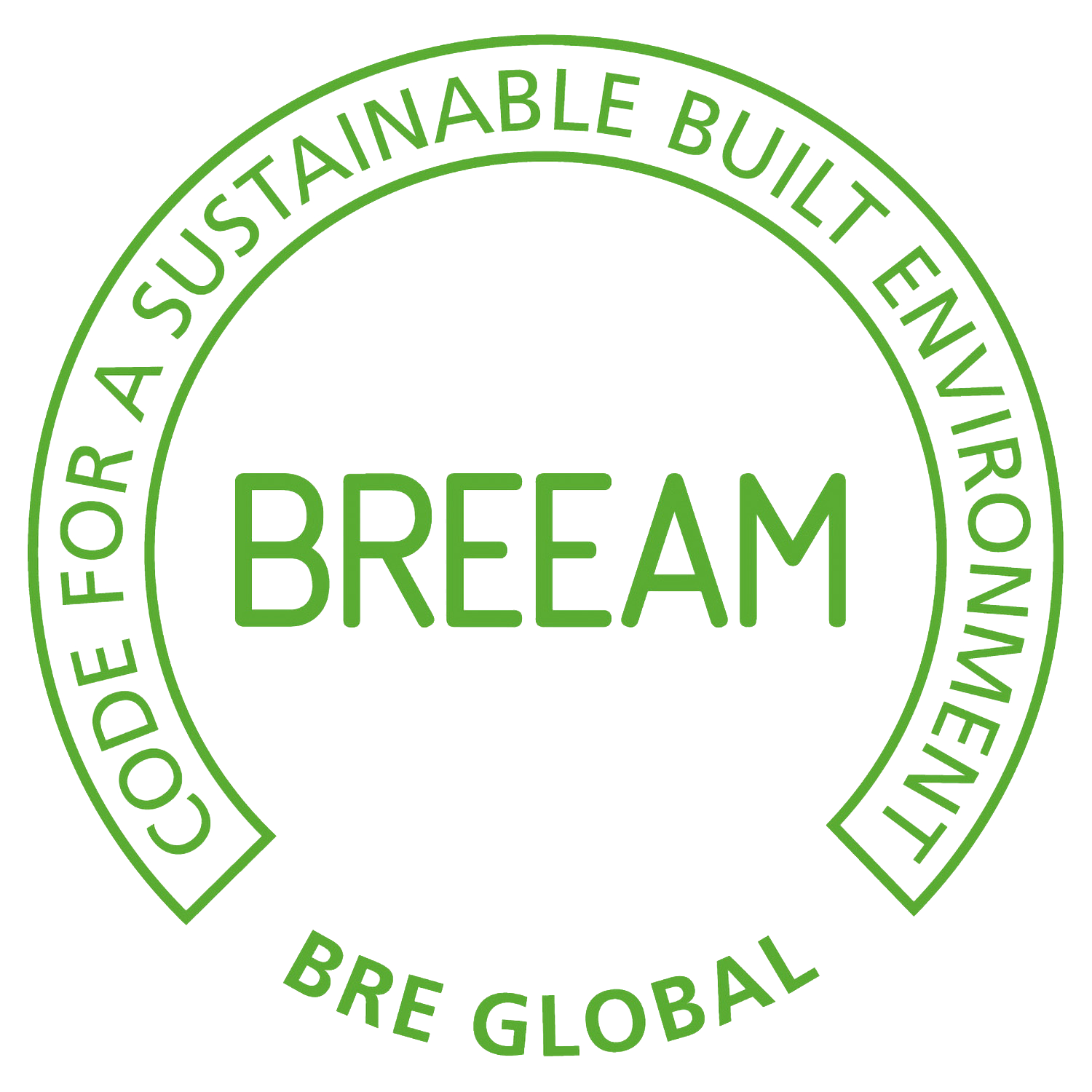
Sustainable Technical Design Services we provide
The quest for Ultra-Low Energy Efficient building has only been made possible in recent years with the advent of new building technologies and the advanced training that is being offered to professionals, such as the Passivhaus Certified Designer qualification.
The competent implementation of these skills and technologies requires a range of skills that are listed below.
Paul McAlister Architects have developed and practised these technical design skills in the pursuit of Ultra-Low operational energy building standards and Carbon Neutral design.
Energy Assessor - OCEA
The Standard Assessment Procedure (SAP) for Energy Rating of Dwellings is the Government’s methodology for calculating the energy performance of dwellings within the UK and is compliant with the requirements of the Energy Performance of Buildings Directive (EPBD).
In accordance with the Building Regulations, SAP energy assessments are produced to demonstrate compliance. In addition, all new homes now require an Energy Performance Certificate (EPC) upon sale or let.
Only qualified, On-Construction Energy Assessors (OCEA) can produce both SAP calculations and EPCs. OCEAs produce calculations that are based on a range of factors which contribute to the energy efficiency of a building, using approved software (e.g. FSAP). These factors include: building materials, main and secondary heating systems, heating controls, ventilation and renewable technologies. An OCEA will fully understand these factors within the calculation which will enable them to consult and assist with the energy efficiency of the design.
Certified Passive House Designer
The Passivhaus standard is much more than an energy performance standard, it is also a quality assurance standard that closes the gap between theoretical performance and reality. The Passivhaus Planning Package (PHPP) software is a rigorous design tool for analysing Passivhaus buildings, making the designer subject to an inbuilt quality assurance that can meet the actual performance targets of the proposed design and specification.
If a client of Paul McAlister Architects desires a Passivhaus building there is a distinct advantage in employing a certified Passivhaus designer who has already demonstrated the knowledge and the skills required.
To meet the Passivhaus criteria the practice uses an in-house quality assurance methodology, using a range of software tools to model such items as thermal bridging or condensation risks. This enables the design and delivery of low or zero-carbon buildings that meet the projected energy load and design criteria.
Certified Passivhaus designers, with a background in design and construction, contribute to a project by undertaking the design and monitoring on-site construction to ensure the contractor meets the design targets and quality required for a Passive House. An experienced certified designer will help to streamline the design, avoid abortive work and advise upon optimisation of the design and construction process. By undertaking these roles they can assist with the delivery of robust solutions and help to minimise, and even reduce, both the capital and running costs without compromising the ambition of the project.
SAP (Standard Assessment Procedure) calculations
SAP (Standard Assessment Procedure) Calculations are required to adhere to Building Regulations Part F (NI) for the compliance for all new build domestic dwellings, conversions and extensions.
Standard Assessment Procedure (SAP) is the UK government's approved method of assessing a building's energy performance and is now mandatory for all new build dwellings.
The first part of the SAP calculations involves the assessor working out a Target Carbon Dioxide Emissions Rate (TER) for the dwelling. The next step in the SAP report process sees the assessor calculate the Dwelling Carbon Emissions Rate (DER). If this is equal to or less than the TER then the SAP rating shows a pass and the SAP calculations are complete.
If the DER is not equal to or less than the TER then the SAP assessor will liaise with the client and suggest changes that will improve the DER to ensure that the SAP calculations achieve a pass.
EPC (Energy Performance Certificates)
An EPC (Energy Performance Certificate) rates the energy performance of a building. It is broadly similar in design and intent to the well-established coloured energy labels provided with electrical appliances such as refrigerators and washing machines.
It gives the building a standard energy and carbon (C02) emission efficiency grade from 'A' to 'G', where A is very efficient and G is very inefficient. The higher the rating the more energy efficient the building is and therefore the fuel bills will be lower.
As well as rating the property, part of the Energy Performance Certificate (EPC) is a recommendation report which lists the potential rating the building could achieve. Recommendations are given on how to improve the rating of the property and an estimation of how much money these improvements could save you.
As soon as the building is marketed for sale or rent the EPC must be in place. This is the responsibility of the owner and the agent. Failure to have an EPC will result in both parties being subject to a fine.
Only qualified “On Construction Domestic Energy Assessors” (OCDEA) can produce both SAP calculations and EPCs. OCDEAs produce calculations, that are based on a range of factors which contribute to the energy efficiency of a building, using approved software. These factors include building materials, main and secondary heating systems, heating controls, ventilation and renewable technologies.
Paul McAlister Architects fully understand these factors as registered Energy Assessors. This allows us to consult and assist in meeting the rigorous design standard of ultra-low carbon buildings.
PHPP (Passive House Planning Package)
A Passive House is far more than the sum of its parts, precise planning is required in order to ensure that the components used work together to achieve the desired result. The Passive House Planning Package (PHPP) is the key design tool used when planning a Passive House and as such, serves as the basis of verification for the Passive House Standard. While there are other design tools on the market, it is the PHPP's high level of accuracy that sets it apart: energy balances can be calculated with the PHPP to an accuracy of +/- 0.5kWh!
Based for the large part on European norms, the PHPP makes use of numerous tested and approved calculations to yield a building’s heating, cooling and primary energy demand as well as its tendency to overheat in the warmer months. While the PHPP was developed specifically for Passive Houses, it is a design tool that may also be used for other buildings, including retrofits of historical buildings.
U-Value Calculations
The U-value measures how well a building component, e.g. a wall, roof or window, keeps heat inside a building. For those living in a warm climate, the U-value is also relevant as it is an indicator of how long the inside of the building can be kept cold.
In both cold and warm climates, good U-values are important measures for understanding the amount of energy that is needed to keep a comfortable inside temperature.
The U-value is a measure of the heat flow through a building element. The higher the U-value the more heat flows through so it is desirable to have a low U-value as you want to keep heat inside the building or outside depending on the climate you live in.
The U-value physically describes how much thermal energy in Watts [W] is transported through a building component with the size of 1 square metre [m²] at a temperature difference of 1 Kelvin [K] (=1ºC). Thus the unit for U-values is W/(m²K).
So what is a good U-value? For external walls, roofs, etc. a U-value of less than 0.2 W/(m²K) can be called good. This value can be reached by using thermal insulation with a thickness of about 20 cm or more. For windows a good U-value should be less than 1.0 W/(m²K).
Thermal Bridge Modelling
Thermal Bridges are created when materials that are poor insulators come in contact, allowing heat to flow through the path formed by the contact.
Insulation around a bridge is of little help in preventing heat loss or gain due to thermal bridging; the bridging has to be eliminated, rebuilt with a reduced cross-section or with materials that have better insulating properties, or with an additional insulating component or thermal break.
Thermal bridges are characterised by multi-dimensional heat flow, and therefore by the fact that they cannot be adequately approximated by the one-dimensional models of calculation typically used in norms and standards for the thermal performance of buildings (U-values). Surface moisture due to condensation (typically occurring in such regions as floor-wall connections, window installations, etc.) as well as mould growth in humid environments can also be effectively prevented by means of thermal bridge evaluation during the planning and detail design.
BREEAM Assessments for Non-Domestic Buildings
BREEAM is the world's foremost environmental assessment method and rating system for buildings, with 425,000 buildings with certified BREEAM assessment ratings and two million registered for assessment since it was first launched in 1990.
While BREEAM covers many different building types, they are all assessed in essentially the same way. BREEAM consists of nine BREEAM Categories plus a tenth Innovation category.
The categories are:
Management, which deals with sustainable procurement, responsible construction practices, construction site impacts, stakeholder participation, life-cycle costing and service-life planning.
Health and Well-being, which deals with those aspects of a design that impact on the health or well-being of building occupants, including visual and thermal comfort, indoor air and water quality, acoustic performance, and providing low-risk, safe and secure access to and use of buildings.
Energy, which deals with the reduction of carbon emissions, including the use of energy-efficient building services, plant and equipment, low or zero-carbon energy-generating technologies, and the ability to monitor energy use by sub-metering.
Transport, which deals with access to adjacent public transport networks and local amenities, along with the provision of information on travel options to building occupants, the provision of cyclist facilities and the limitation of car parking.
Water, which deals with opportunities for reducing water consumption through the use of efficient sanitary ware, the reuse and recycling of water, the provision of leak detection and prevention of leaks, monitoring controls and the provision of water-efficient equipment.
Materials, which considers the embodied life-cycle environmental impacts of materials, the use of responsibly sourced materials and the robustness of the building fabric.
Waste, which deals with reducing construction waste, the possible use of recycled aggregates, the provision of space to encourage operational recycling and encouraging the specification of finishes by the building’s occupants.
Land Use and Ecology, which considers the environmental impact of site selection including its ecological value and the protection of existing ecological features, mitigating the impact on and enhancing the ecological value of a site and limiting any long-term impacts on a site’s biodiversity.
Pollution, which deals with the impacts of refrigerants and nitrous oxide emissions, the impacts of surface water run-off from a site and the impact of light and noise pollution on neighbours.
Innovation – the BREEAM 2008 Scheme introduced additional credits that could be awarded in recognition of achieving either exemplary levels of performance (above best practice performance currently recognised by BREEAM) in certain Issues or for incorporating innovative sustainability solutions within a building’s design.













